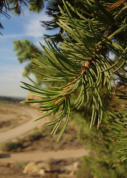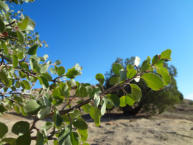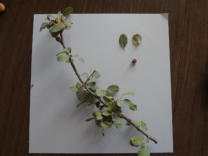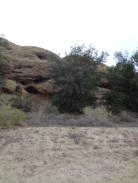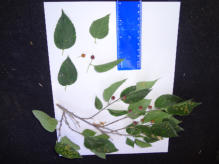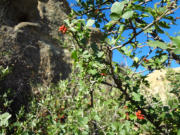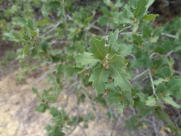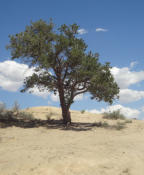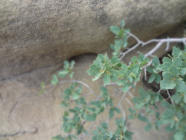UPDATED 11/7/2014
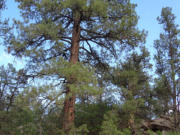
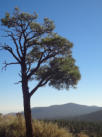
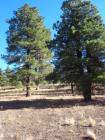
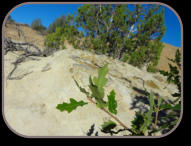
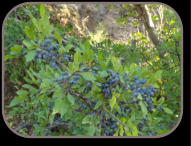




INDEX
PJ COUNTRY PLANTS
SMALLER PLANTS
Amaranth Broom Snakeweed Buckwheat (wild) Cattails Cholla Evening Primrose Mormon Tea
Indian Paintbrush Indian Ricegrass Prickly Pear Prince’s Plume Yucca
BUSHES
Mountain Mahogany Rabbitbrush Serviceberry Threeleaf Sumac
TREES
Juniper Netleaf Hackberry Oak Pinion Ponderosa
HERBARIUMS & PLANT LISTS
PLANT SOCIETIES
BOOK SOURCES
Note: The plants in this section are an informal introduction to common plants to demonstrate the real plant diversity in the
area. Some people think the high desert is “just a desert” or “only a monoculture” filled with just a few simple types of plant life.
This kind of thinking makes it too easy to justify blading large areas for construction purposes. We can use plant life already
there in conjunction with human building and other activities to make the whole area feel fresh, alive and attractive.
Please see professional botanical resources (ie, book sources, herbariums and plant societies listed below) for more in-depth
information. You can click on most of these photos for a larger and more detailed view.
PLANT & RESOURCE SECTION
SMALLER PLANTS
Amaranth (Pigweed)
back to index pj country plants
Broom Snakeweed
Gutierrezia sarothrae
back to index pj country plants
Cattails
back to index pj country plants
Cholla
Opuntia spp (O. whipplei - whipple cholla/yellow flowers)and O. imbricata )cane cholla -magenta flowers common in area see
pp 174-175 Dunmire & Tierney)
back to index pj country plants
Evening Primrose
Oenethra spp.
back to index pj country plants
Wild Buckwheat
Eriogonum spp. (Several different species in area with different colored flowers, one of which is E.
umbellatum)
back to index pj country plants
Indian Paintbrush
Castilleja integra (Different species in area)
back to index pj country plants
Indian Ricegrass
back to index pj country plants
Mormon Tea or Joint Fir
Ephedra sp. (There are different species in the area, two most common are E. torreyana and E. viridis - the difference between
the two can be discovered by the plant color and number of bracts (bright green and 2 for E. viridis, olive green and 3 for E.
torreyana) along the joints (See p. 92 of Elmore’s Shrubs and Trees of the Southwest Uplands listed below). There are male
and female plants with different bloom styles. Some get as big as bushes).
back to index pj country plants
Prince’s Plume
Stanleya Pinnata Mustard Family
Prickly Pear
Opuntia spp. (Different species in area - O. phaeacantha, O. polycantha, O. erinacea, etc.)
Yucca
Yucca spp. (Y. baccata - banana yucca, Y. glauca, Y. angustissima - fineleaf yucca)
LARGER BUSHES AND TREES
BUSHES
Mountain Mahogany
Cercocarpus betuloides and Cercocarpus montanus are two common species in the area.
New Mexico Olive
Foresteria Neomexicana
Rabbitbrush
Chrysothamnus nauseosus is the larger golden rabbitbrush or often seen along roadways and is on e of the most common
rabbitbrush species in the area.
Serviceberry
A typical representative in the area is Utah Serviceberry/Amelanchier Utahensis
Threeleaf Sumac, squawbush
Rhus trilobata
TREES
Trees can range from bush-like to full blown trees
Netleaf Hackberry
Celtis Reticulata
Juniper
Juniperus monisperma (one-seed Juniper) and J. scopulorum (Rocky Mountain Juniper) and Juniperus osteosperma (Utah
Juniper are common junipers. Locally also known as cedar - cedar is actually a different species. (See pp. 21-22 Roadside
Plants of Northern New Mexico listed below)
Oak
Quercus gambelii is a common species in the area, although there are others. (See a listing of several area oaks on p. 23 and p.
111 (Q. gambelii) in Elmore’s Shrubs and Trees of the Southwest Uplands listed below).
Pinion
Pinus edulis
Ponderosa
Pinus ponderosa
HERBARIUMS, PLANT LISTS & OTHER HELPFUL INFO
(Much of this is also found in the Schools - Environment, Etc. Section)
Colorado State Herbarium
http://herbarium.biology.colostate.edu/
Fort Lewis College Herbarium
http://faculty.fortlewis.edu/mccauley_r/Herbarium/index.htm
New Mexico State University Agricultural Science Center (ASC)
(see notes on NMSU-ASC below)
http://irrigationmanagement.nmsu.edu/index.html
http://www.xericenter.com/main.php
San Juan College Herbarium
http://www.sanjuancollege.edu/pages/425.asp
Southwest School of Botanical Medicine - Michael Moore’s Plant Lists
http://www.swsbm.com/HOMEPAGE/GenusIndex.html
PLANT SOCIETIES
(Link below takes you to a list of plant groups in the NATURE GROUPS, etc. section)
Plant Societies
BOOK SOURCES
Carter, J., Underwood,W.J., Leggitt.M. (1997). Trees and Shrubs of New Mexico. New Mexico: Mimbres
Publishing.
Dunmire, W., Tierney, G. (1997). Wild plants and native peoples of the four corners. New Mexico: Museum
of NM Press.
Elmore, F. H. (1976). Shrubs and trees of the southwest uplands. Arizona: Southwest Parks and Monuments
Association.
Hughes, P., Tierney, G. (1983). Roadside plants of northern new mexico. New Mexico: Jene Lyon.
Little, E. L. (1980). The audubon society field guide to north american trees. New York: Knopf
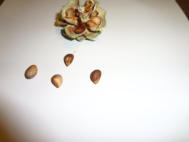
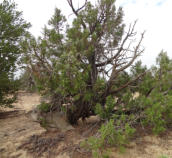

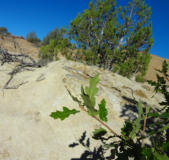
Environment
PJ Country Plants
G












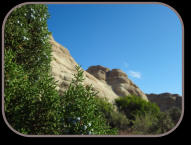


- INDEX - environment
- INDEX resources
- Animal Issues
- Env. concerns SW
- Fukushima
- Fukushima website links-summary
- Recycling
- Water
- Renewable energy
- water issues
- sustainable practices
- Connecting for Conservation
- Libraries & Museums
- Media In Area
- Museums & Archaeology
- Food Competence & Gardening
- Oregon Coast Deforestation
- Schools Nature, Biology, Etc.
- Resources General Environmental
- Solar pros & cons
- Land Use
